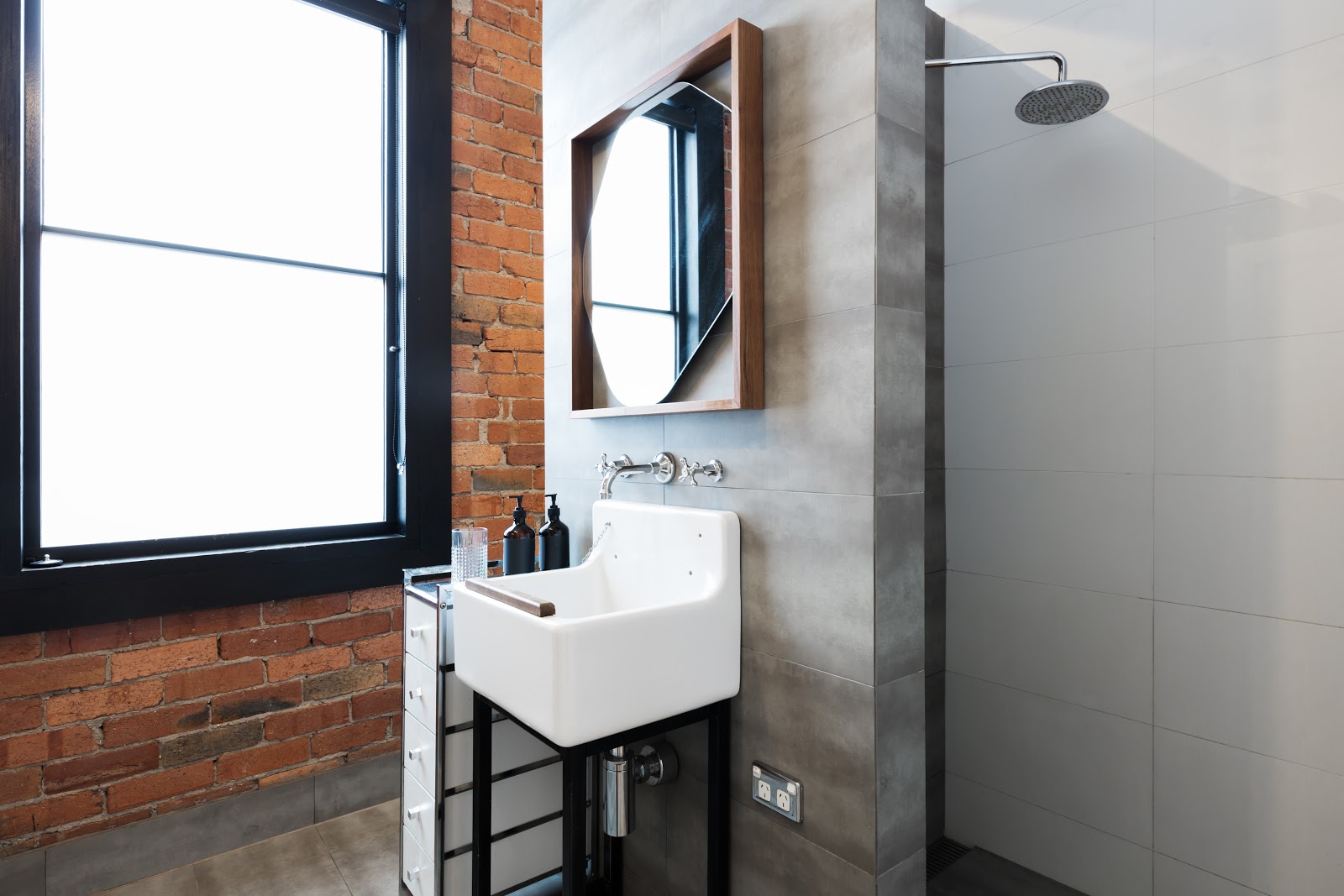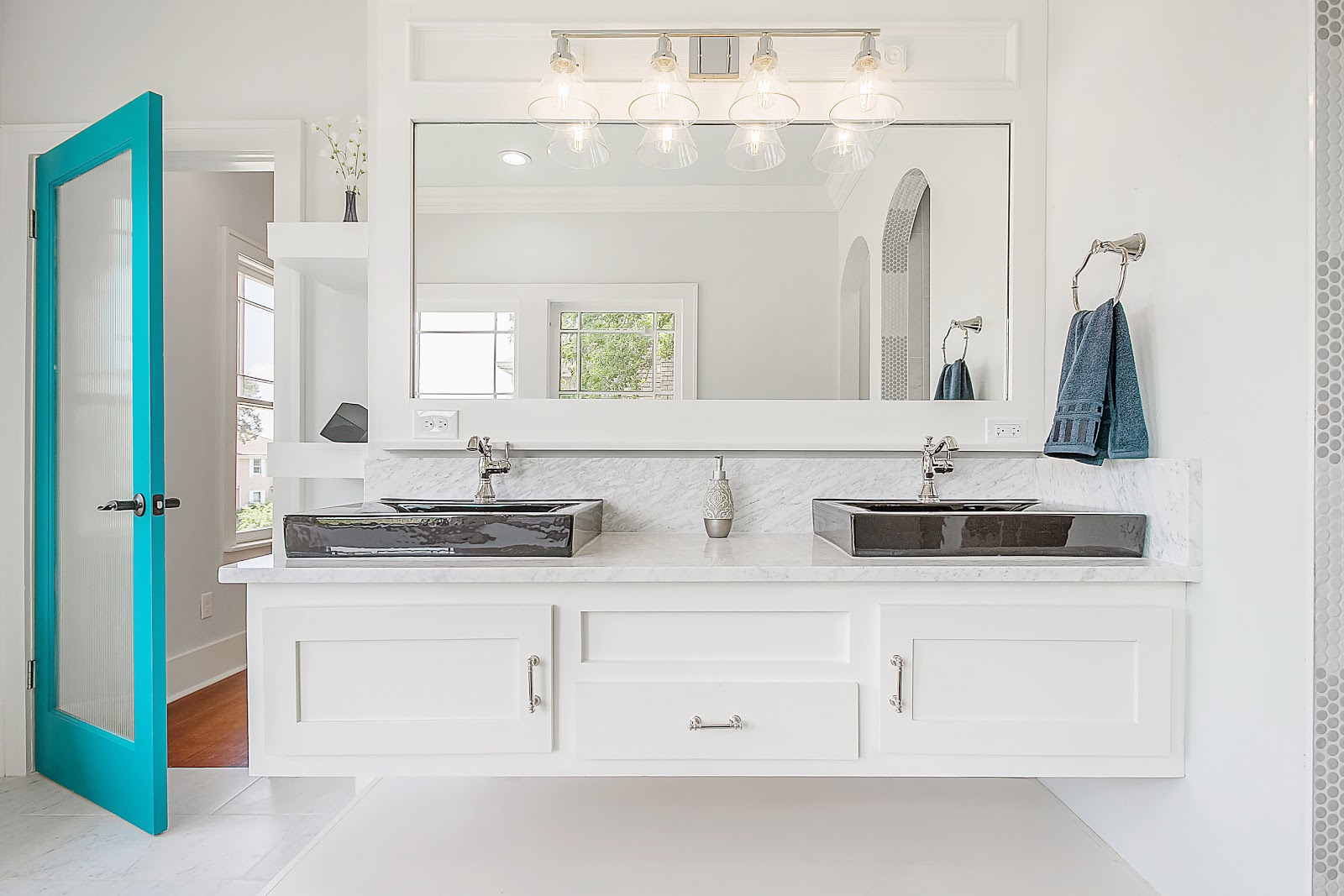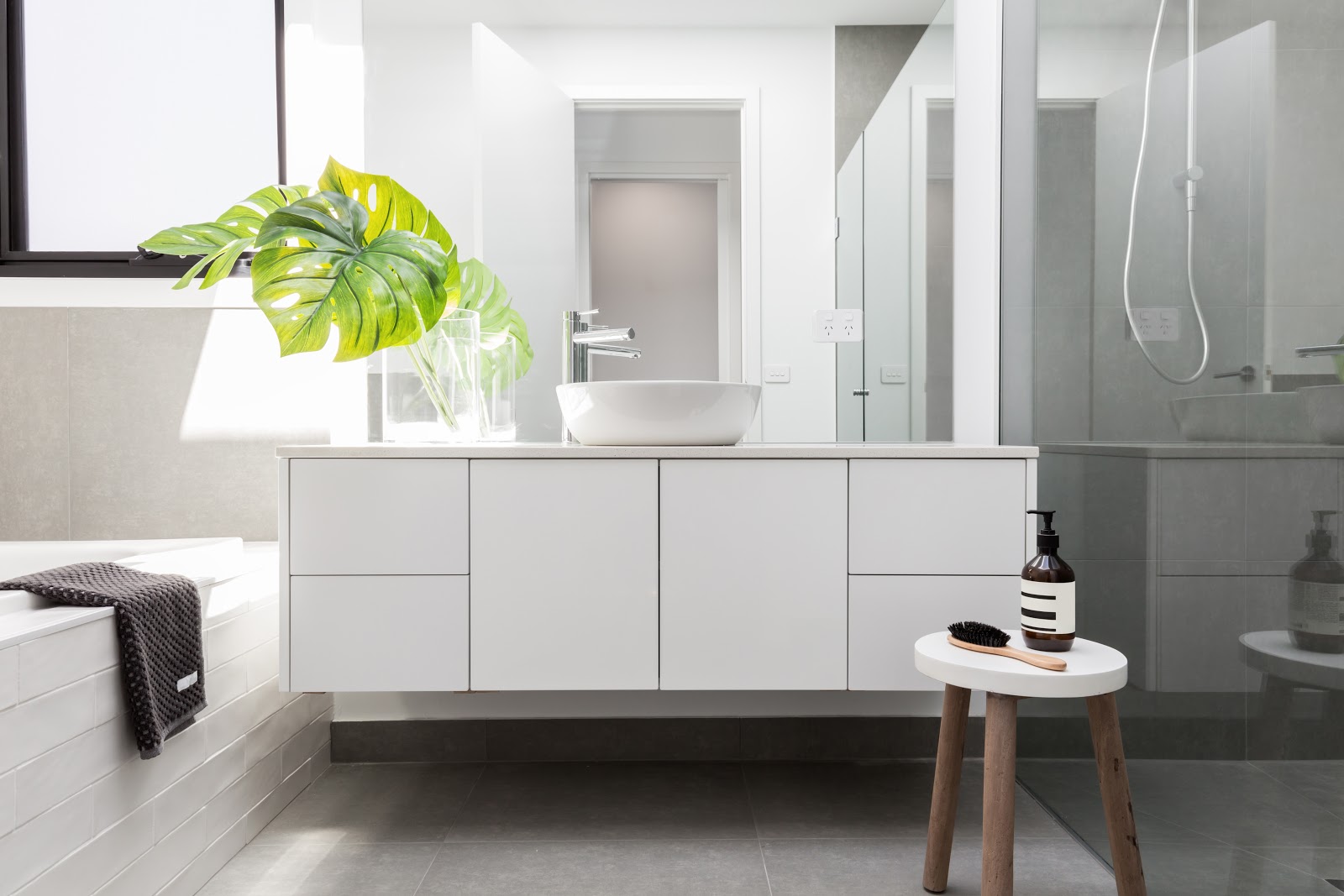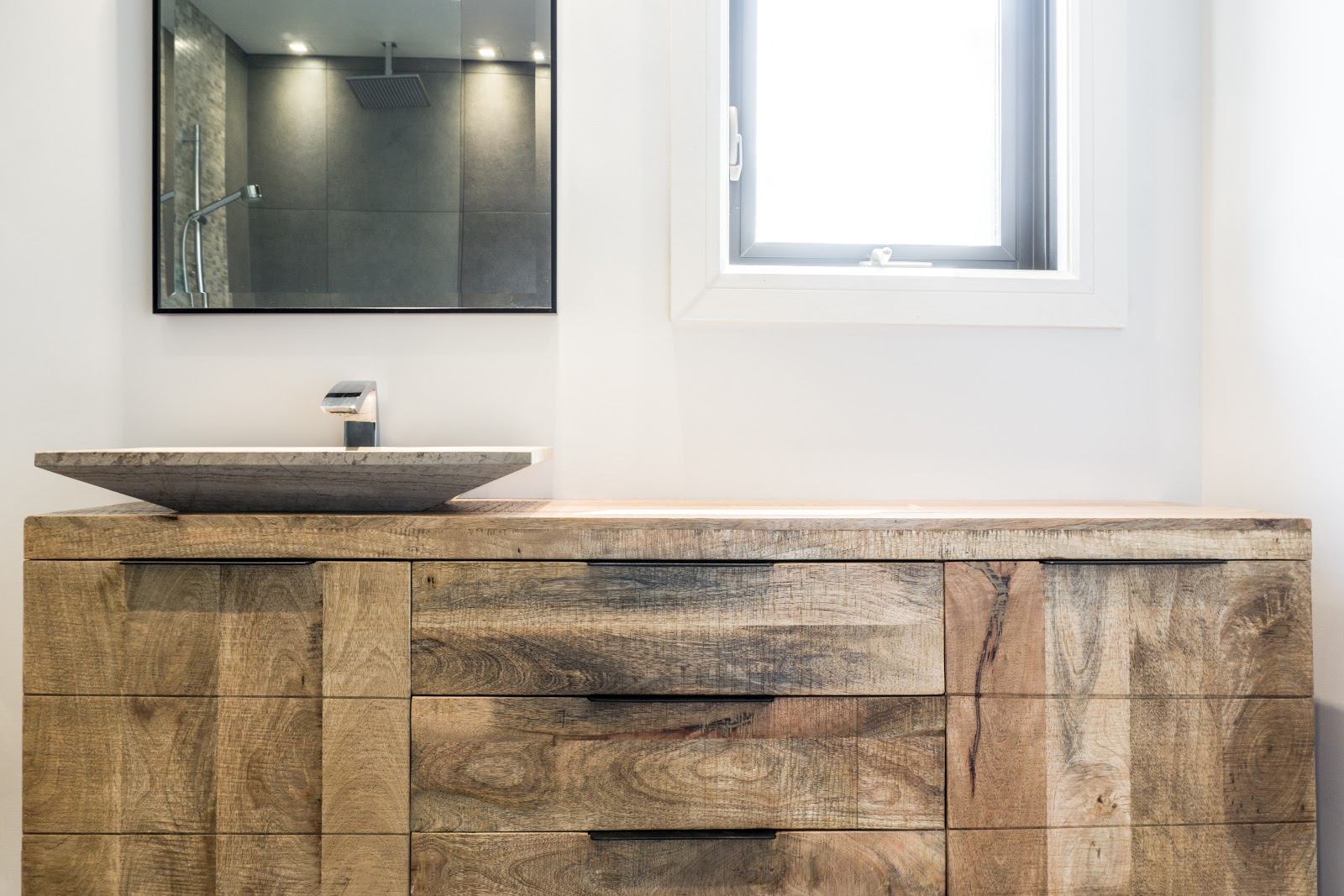Between design, size, and price point, there are tons of unique bathroom vanities on the market. The only downside is that with so many options, it can be hard to tell when you’ve found the one. To help your decision making process, we’ve put together this step-by-step guide to choosing your new bathroom vanity.
Plumbing

Before considering the size, design or placement of you vanity, you’ll first need to figure out where and how your home’s plumbing is connected to your bathroom. Moving plumbing can be complicated and will likely delay your project and cost you more money. For this reason, we recommend basing your vanity’s sizing and layout on your current plumbing situation. If you’re unsure where or how your current model is connected, contact a plumber who can quickly locate the right pipes.
Size & Placement

After you’ve checked out your plumbing situation, you’ll also want to determine how big you can go with your vanity without disrupting the flow of your bathroom. Vanities are usually a minimum of 24 inches wide and 21 inches deep. That being said, some brands may carry smaller models and a custom unit is always an option. Most retailers carry models that are up to 60 inches wide and, again, custom is always an option.
When deciding on size, make a note of any doors (don’t forget the shower!) that need to be able to open it the vanity’s vicinity. Many homeowners use tape to get a better visual on sizing, or you can hire a contractor specializing in bathroom renovations who can help you determine the appropriate size for your space.
Storage

One of the most important aspects of your new vanity will be storage. Regardless of size, some vanity styles will offer more storage than others. For example, floating vanities have less room for drawers and cabinetry down below. That being said, if you’re set on a floating vanity, you can have a contractor add wall-mounted cabinets to your new bathroom. This is an effective way to add storage without taking up valuable square footage on your floor plan.
Don’t forget that drawers and cabinets function differently and take up different kinds of space. Make sure to note how far drawns and cabinet doors extend so that you aren’t left with drawers that don’t open fully.
Style

Vanity: Free Standing, Wall-Mounted or Corner-Mounted
You also need to decide how you want to mount your vanity. Free standing vanities are the most common. They offer the most storage and are considered the easiest models to hook up to existing plumbing. Wall-mounted vanities are also growing in popularity. Also known as floating vanities, these models do not touch the ground. Although this design opens up floor space in smaller bathrooms, they also have limited storage. Your final option is a corner-mounted vanity. These vanities fit into a corner, making them your most space-effective option – perfect for a powder room.
Sink: Undermounted, Self-Rimming or Vessel
When it comes to the sink or sinks in your vanity, there are three styles to choose from: undermounted, self-rimming and vessel. Undermounted sinks are installed under the counter, without any raised edges. Self-rimming sinks, or drop-in sinks, leave a raised ridge around the sink, taking up slightly more counter space. Vessel sinks are bowl-like and typically deeper than the other options.
Hardware & Faucets
Lastly, you’ll need to select your hardware and faucets. Although most vanities don’t come with these fixtures, you’ll want to double check the product description to ensure they aren’t included. While you’re at it, look for any mention of whether your faucet should be wide-set or centerset. This will help you narrow down your selection.
If you’ll be needing a faucet, you need to note the number of faucet holes in your vanity and their distance apart. Once you’ve made your choice, your best bet is to hire a specialist to do the installation to ensure you don’t damage your faucet, vanity or plumbing.
Materials

As we mentioned above, most retailers will allow you to customize your stand with hardware, countertops and sinks. Most businesses offer a variety of materials to choose from, especially for your countertop and cabinets.
Countertops
When renovating a bathroom, most designers start by choosing the vanity countertop. The most important feature of your new countertop is that it’s easy to clean and will not be damaged by water. Popular options include cast polymers, ceramic tiles, natural stone engineers stone or quartz and laminate. Depending on your needs and budget, a bathroom specialist can help guide your decision making process in the right direction.
Cabinetry
The next feature to consider is your drawers or cabinets. The three most common options are wood, veneer and laminates. While veneer and laminate options will be just fine on their own, wood cabinets need to be properly treated to protect them from water damage. If you choose to go with wood, connect with a painter or stainer to make sure your vanity is properly protected.
Now that you know what’s involved, it’s time to choose your vanity. Don’t forget to consult with a bathroom renovation specialist to ensure your new vanity looks incredible and works perfectly.
